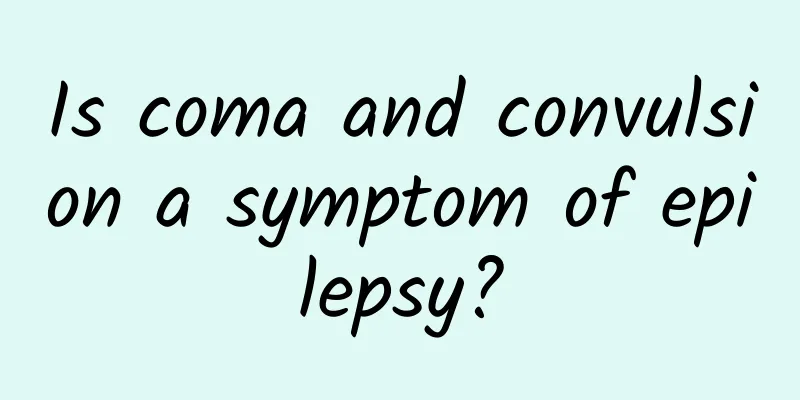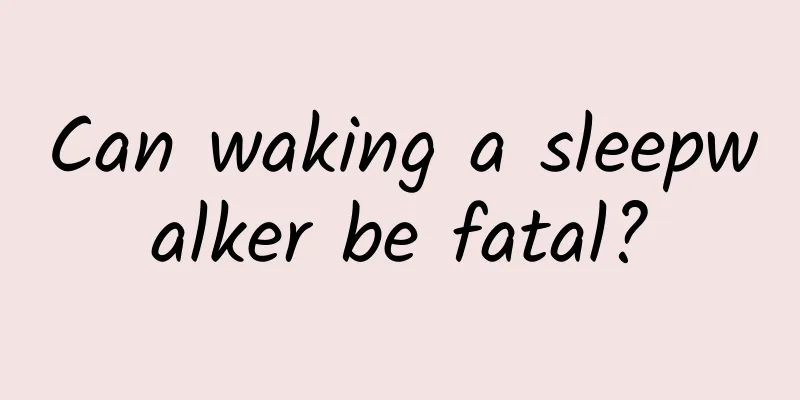Is coma and convulsion a symptom of epilepsy?

|
When someone around us is in a coma or convulsions, most of us will think that this is epilepsy. Epilepsy is usually called epilepsy, which is a brain nerve disease. So what are the symptoms of epilepsy? Is coma and convulsion epilepsy? There is a certain probability that coma and convulsions are caused by epilepsy, but it is not absolute. So it is better to go to the hospital for diagnosis. Symptoms of epilepsy Epilepsy can occur in all age groups. The clinical manifestations of epileptic seizures are complex and varied due to the different starting sites and transmission modes of abnormal discharges. 1. Generalized tonic-paroxysmal seizures (grand seizures): Characterized by sudden loss of consciousness and generalized rigidity and convulsions, a seizure usually lasts less than 5 minutes, often accompanied by tongue biting, urinary incontinence, etc., and can easily cause suffocation and other injuries. Tonic-clonic seizures can be seen in any type of epilepsy and epileptic syndrome. 2. Absence seizures (minor seizures): Typical absence seizures are sudden onset, cessation of movement, staring, no response to calls, blinking, but with little or no motor symptoms, and ending suddenly. They usually last 5-20 seconds, rarely more than 1 minute. They are mainly seen in children with absence seizures. 3. Tonic seizures: The symptoms are strong and continuous contraction of the whole body or bilateral muscles, muscle rigidity, which often lasts from a few seconds to tens of seconds, but generally does not exceed 1 minute. Tonic seizures are more common in patients with epilepsy and diffuse organic brain damage, and are generally a sign of severe illness, mainly in children, such as Lennox-Gastaut syndrome. 4. Myoclonus seizures: It is a sudden, rapid and short contraction of muscles, which is similar to electric shock-like shaking of the body or limbs. Sometimes it can occur several times in a row, and it often occurs after waking up. It can be a whole-body movement or a local movement. 5. Spasms: Refers to infantile spasms, characterized by sudden, short-term rigid flexion or extension contraction of trunk muscles and bilateral limbs, often manifested as paroxysmal nodding and occasional paroxysmal backward leaning. The entire process of muscle contraction takes about 1 to 3 seconds and often occurs in clusters. It is common in West syndrome and sometimes can also be seen in other infantile syndromes. 6. Atonic seizures: Due to the sudden loss of muscle tension, the body's normal posture cannot be maintained, resulting in symptoms such as cataplexy and falling of the limbs. The seizure duration is relatively short, usually lasting from a few seconds to more than 10 seconds. Short-duration seizures are usually not accompanied by obvious consciousness disorders. 7. Simple partial seizures: The patient is conscious during the seizure, which lasts from a few seconds to more than 20 seconds, and rarely exceeds 1 minute. Depending on the origin of the discharge and the affected area, simple partial seizures can be motor, sensory, autonomic, and psychiatric. The latter two rarely occur alone and often develop into complex partial seizures. 8. Complex partial seizures (psychomotor seizures): Symptoms include sudden cessation of movement, staring eyes, not responding to calls, not falling, and no change in complexion. Some patients may experience automatisms, which are involuntary and unconscious movements, such as licking lips, smacking lips, chewing, swallowing, groping, wiping face, clapping hands, walking aimlessly, talking to oneself, etc., and cannot recall after the attack. 9. Partial secondary generalized seizures: Simple or complex partial seizures can be followed by generalized seizures, the most common of which is generalized tonic-clonic seizures. Partial seizures followed by generalized seizures still belong to the category of partial seizures. They are obviously different from generalized seizures in terms of etiology, treatment methods and prognosis. Therefore, it is particularly important to distinguish between the two in clinical practice. |
<<: What are the symptoms of male sterile prostatitis?
>>: What causes kidney deficiency in men?
Recommend
What are the dangers of high pituitary prolactin in men
High levels of pituitary prolactin in men have a ...
What is the cause of blood in men's urine?
Many men sometimes find that their urine contains...
Want to learn fitness? Fitness plan for men in the gym
The gym is the best place to exercise muscles, be...
What to do with eczema on hands and feet, folk remedies and taboos for treating eczema
Eczema is a common skin disease. The most annoyin...
Can male breast hyperplasia turn into cancer?
Many people think that breast hyperplasia only oc...
What are the male enhancement supplements? Men can choose these three types of male enhancement
Male friends usually strengthen their bodies by t...
What should I pay attention to when doing spermatozoology?
For many male friends, it is necessary to do a ro...
Does staying up late affect your stomach? Be careful of gastrointestinal crises!
In modern society, more and more people are suffe...
4 things men should do before going to bed to become stronger
1. Massage Yongquan acupoint When you have troubl...
What is the correct way to ejaculate?
Male friends still need to have a correct underst...
How to treat male peeling
When men reach a certain age, they will have fore...
How to train abdominal muscles and mermaid lines for girls
For many men, the mermaid line is very important,...
Is it good for a man to have a mole on his forehead?
The forehead is an important part of our body. Th...
Which department should I go to for testicular pain?
If there is a problem with the male testicles, it...
The part of a man that needs the most care
All men are concerned about their "face"...









